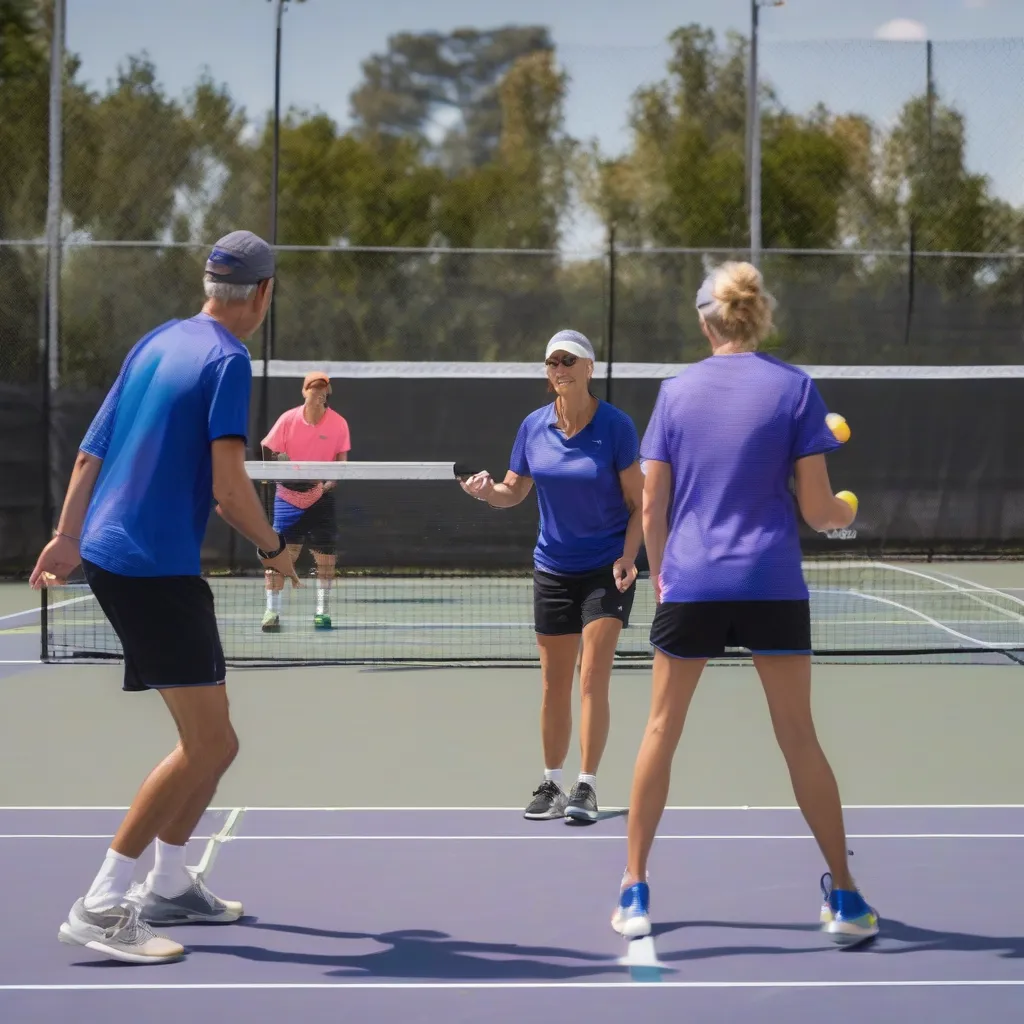Imagine this: you’ve returned a deep serve, pushing your opponent back to the baseline. They loft a high return, giving you the perfect opportunity to attack and finish the point at the net. But your transition is slow, your footwork clumsy, and you end up popping the ball up for an easy put-away. Sound familiar? Mastering the transition from baseline to net is crucial for aggressive, winning pickleball. This article will equip you with effective drills to hone this essential skill, transforming you into a net-dominating force.
Understanding the Baseline-to-Net Transition
The transition from baseline to net isn’t just about moving forward; it’s about moving forward effectively. It requires a coordinated blend of footwork, paddle control, and strategic thinking. A successful transition allows you to take control of the net, volley aggressively, and put pressure on your opponents.
Drills to Sharpen Your Transition
The Approach Volley Drill
This drill focuses on hitting a volley while moving forward. Start at the baseline and have a partner feed you a high, soft shot. As the ball approaches, move forward with quick, controlled steps, aiming to meet the ball in front of you. Focus on making contact with the ball early, before it drops too low, and volleying it deep into your opponent’s court.
The Two-on-One Transition Drill
This drill simulates a game situation. One player starts at the baseline, while two players are at the net. The baseline player attempts to hit a passing shot, while the net players try to volley it away. This drill helps you practice transitioning under pressure, making decisions about when to approach and what type of volley to execute.
The Baseline-to-Net Footwork Drill
This drill isolates the footwork component of the transition. Place cones or markers along a path from the baseline to the non-volley zone line. Practice moving forward quickly and efficiently, using short, shuffling steps. Focus on maintaining balance and keeping your weight centered as you move.
 Pickleball Baseline to Net Transition Drill
Pickleball Baseline to Net Transition Drill
The Cross-Court Transition Drill
This drill adds a directional element to the transition. Start at the baseline on one side of the court and have a partner feed a ball to the opposite side. Move forward diagonally, aiming to intercept the ball near the non-volley zone line on the opposite side. This drill simulates a common game scenario and helps you practice covering ground quickly and efficiently.
Tips for a Smooth Transition
- Quick, controlled steps: Use short, shuffling steps to maintain balance and control as you move forward. Avoid long strides, which can make you vulnerable to quick shots.
- Paddle preparation: Get your paddle ready early, holding it in front of you as you approach the net. This allows you to react quickly and volley effectively.
- Target the non-volley zone line: Aim to reach the non-volley zone line as you make your transition. This puts you in a prime position to volley and control the net.
- Watch the ball: Keep your eyes on the ball throughout the transition, ensuring you make clean contact and volley accurately.
- Practice consistently: Like any skill, mastering the baseline-to-net transition takes practice. Incorporate these drills into your regular training routine to see significant improvements in your game.
Advanced Transition Strategies
- The Third Shot Drop: Mastering the third shot drop can set up the perfect opportunity for a net transition. A well-placed drop shot forces your opponents back, giving you time to move forward and take control of the net. For more on third shot drops, see this guide on pickleball serve and volley.
- Reading Your Opponent: Anticipating your opponent’s shots is key to a successful transition. Watch their paddle position and body language for clues about their next move. This allows you to position yourself optimally and transition to the net effectively.
- Communication with Your Partner: In doubles, communicate with your partner about who will transition to the net. This prevents collisions and ensures that you have adequate court coverage. Explore pickleball stacking strategies for more insight into partner positioning.
Testimonials and Expert Advice
“The baseline-to-net transition is the cornerstone of aggressive pickleball,” says Sarah Ansboury, a certified pickleball instructor. “By practicing these drills regularly, players can significantly improve their net game and overall performance.” Many top players emphasize the importance of footwork drills for pickleball players, recognizing that efficient movement is the foundation of a strong game.
Conclusion
Transitioning efficiently from baseline to net is a game-changer in pickleball. By mastering this crucial skill, you can dictate the pace of play, put pressure on your opponents, and finish points decisively. Remember to practice these drills consistently, focusing on proper footwork, paddle preparation, and strategic thinking. So, lace up your shoes, grab your paddle, and start practicing! Share your experiences and progress in the comments below, and let’s elevate our pickleball game together. Are you ready to dominate the net? Check out our other resources on pickleball footwork drills and top pickleball drills to boost your game for even more training ideas.
- Baker, Joe (Author)
- English (Publication Language)
- Amazon Kindle Edition
- Bond, Payton (Author)
- Hall, Dennis (Author)
- English (Publication Language)
- Callahan, John (Author)
- English (Publication Language)
- Carnot, Prem (Author)
- English (Publication Language)
- Anderson, Brian (Author)
- English (Publication Language)
- Foster, Blake (Author)
- English (Publication Language)
- Dunmeyer, Phil (Author)
- English (Publication Language)
- Baker, Mr. Joe (Author)
- English (Publication Language)
- Biff, Jaden (Author)
- English (Publication Language)









